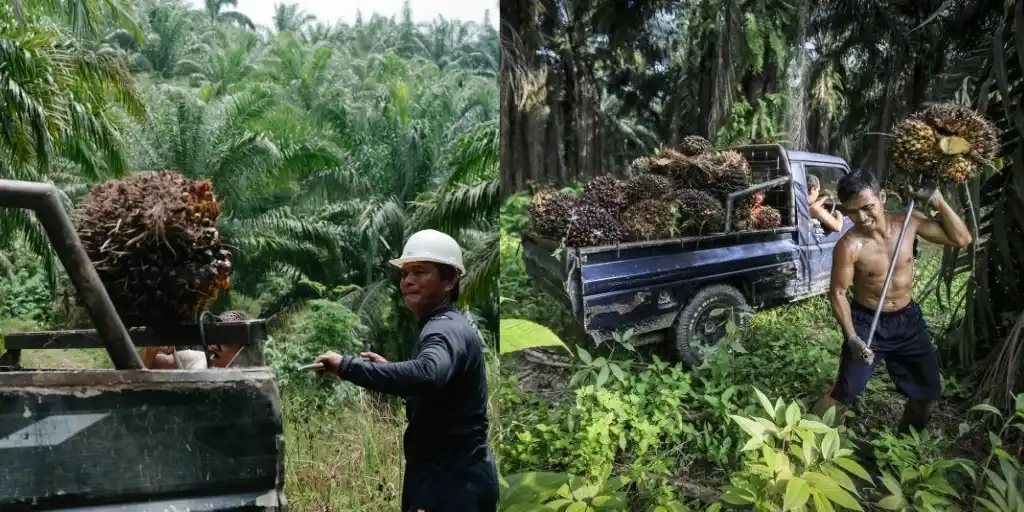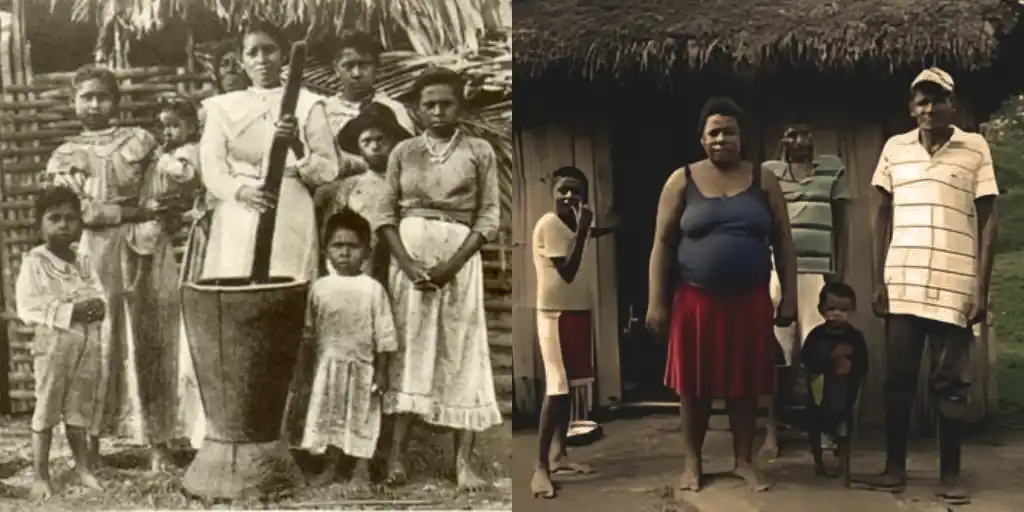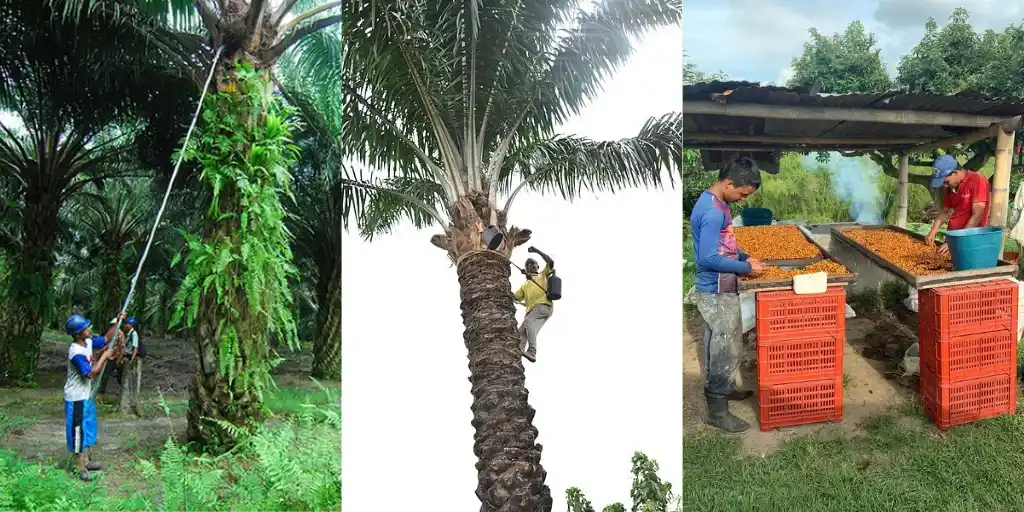Explore Batana Plant: Benefits, Uses and Global Importanc

The Batana plant, known scientifically as Elaeis oleifera, has garnered significant attention in recent years for its incredible versatility and sustainability. Often overshadowed by its more famous cousin, the African Oil Palm, the Batana plant is slowly but surely gaining recognition as a powerful force in various industries. From its roots in indigenous culture to its growing global presence, this plant offers a glimpse into a future where natural resources are respected and utilized to their fullest potential. This article will walk you through the fascinating world of this unique plant, exploring its origins, botanical characteristics, ecological significance, and more.
What is the Batana Plant?
Beyond its aesthetic appeal, the plant is a powerhouse of natural resources. Food, medicine, and everyday products are made from its heart (palm cabbage), fruit, and oil called Batana oil. With its sustainable nature and potential to address global challenges, this plant is rapidly gaining recognition as a key player in sustainable development.
The Batana plant, scientifically known as Oenocarpus bataua, is a majestic palm tree indigenous to Central and South America. Often referred to as the “miracle palm” or the “Amazonian gold,” this extraordinary plant has been cherished for centuries by indigenous communities for its remarkable properties and versatile uses.

Origin and History
This historic palm tree has a rich history deeply intertwined with indigenous cultures in Central and South America. For centuries, these native peoples have admired the Batana palm as a sacred and invaluable resource. They use its bounty for sustenance, healing, and spiritual practices. Traditional knowledge about cultivating, harvesting, and utilizing this plant has been passed down through generations, forming an integral part of their cultural heritage.
Originating in the Amazon rainforest, the plant thrives in a humid, tropical climate. Its resilience and adaptability allowed it to spread across vast regions, becoming a staple of life for countless indigenous tribes. This remarkable plant’s enduring presence in the rainforest speaks to its integral role in local ecosystems and cultural practices. It has been revered for generations.

Botanical Description
Elaeis oleifera, the Batana plant, is a species of palm that grows up to 20 meters in height. It features a low-lying trunk with long, arching leaves that can reach 5 to 6 meters in length. The plant produces small, reddish-orange fruit rich in oil, particularly in the mesocarp, or the flesh surrounding the seed. These fruits cluster together in large bunches, providing a vital food source for both wildlife and humans. The fruit is similar to the African Oil Palm. However, the Batana plant’s oil is distinct in its composition, rich in unsaturated fatty acids and antioxidants.
Soil Requirements
The Batana plant thrives in specific soil conditions that support its robust growth and optimal yield. While it adapts to various soil types, it prefers well-drained, fertile soils rich in organic matter. The ideal soil pH for Batana cultivation ranges from acidic to neutral.
The proper soil structure is essential for plant health. It allows proper root development, nutrient uptake, and water infiltration. Sandy loam soils with an optimal balance of sand, silt, and clay are often considered optimal for Batana cultivation. However, with appropriate soil amendments and management practices, this plant can also flourish in other soil types.
To enhance soil fertility and water retention, incorporating organic matter such as compost or well-rotted manure is beneficial. Additionally, regular soil testing can help identify nutrient deficiencies and guide fertilization strategies.

Climate Needs
The Batana plant thrives in warm, humid climates. It has specific climate requirements for its optimal growth and development. Understanding the specific climate needs of this special plant is crucial for successful cultivation and maximising its potential. By providing the appropriate climatic conditions, growers can enhance plant health, increase productivity, and ensure Batana cultivation sustainability. Let’s discuss the climatic conditions ideal for plant growth.
Temperature: The plant prefers consistently warm temperatures, ideally ranging between 25°C and 32°C (77°F and 90°F). It is sensitive to frost and cold spells, which can damage or kill the plant.
Humidity: High humidity levels are crucial for plant health. The tropical rainforest environment, with its abundant moisture, provides the ideal conditions for this species. Adequate humidity maintains leaf turgor, prevents desiccation, and supports overall plant vigor.
Rainfall: The plant requires ample rainfall throughout the year. While it can tolerate short periods of drought, consistent precipitation is essential for optimal growth and fruit production. The annual rainfall requirement typically ranges between 1500mm and 2500mm (59 inches to 98 inches).
Sunlight: The plant adapts to varying light conditions, but it generally prefers partial shade or dappled sunlight. Excessive direct sunlight can cause leaf burn, while insufficient light may hinder growth and reduce fruit yield.
When to Harvest?
Determine the optimal time to harvest the Batana palm for maximizing yield and quality fruit. Harvesting this highly demanded plant typically occurs when the fruit is fully mature, which is usually around 3 to 4 years after planting. The harvesting period typically coincides with the plant’s fruiting season, which varies depending on the specific region and climatic conditions.
The key indicator of ripeness is the Batana fruit color. When the fruits reach maturity, they often exhibit a deep orange or reddish hue. Harvesting fruits that are too green or overripe can negatively impact oil quality and yield.

Harvesting Techniques
Traditional harvesting methods involve climbing the Batana palm and carefully cutting the fruit clusters. However, with the increasing commercialization of Batana oil, mechanical harvesting techniques are being developed to improve efficiency and reduce labor costs.
Proper harvesting practices are essential to ensure Batana cultivation sustainability. Avoiding excessive fruit removal and leaving sufficient fruits for seed dispersal helps maintain plant population and biodiversity.
Why is it Gaining Popularity?
This surprising plant is gaining popularity due to its numerous benefits, both environmental and economic. Its oil, known for its nourishing properties, has become a staple in the beauty and wellness industries. This appeals to consumers who seek natural and sustainable products. Additionally, the plant’s low environmental impact, compared to the African Oil Palm, makes it an attractive alternative to sustainable agriculture. The plant’s cultural significance and role in supporting indigenous communities further contribute to its growing recognition on the global stage.
Batana Plant Benefits and Diverse Uses in Different Fields
The Batana plant is a true gem, with many uses and benefits in different areas. The reasons for this are largely due to the diverse benefits of Batana oil in different fields. If you want to truly enjoy nature’s benefits, always select the (best batana oil) for yourself. Let us look at these versatile uses of batana oil and their benefits.

Food and Beverage
| Fruit Consumption | Batana fruits are consumed fresh, providing a sweet and nutritious treat |
| Oil Extraction | Batana fruit oil is a culinary delight, offering a distinct flavor profile and potential health benefits |
| Palm Heart | The tender heart (palm cabbage) of the Batana palm is a delicacy enjoyed in many cultures |
Cosmetics and Personal Care
| Skin Care | Batana oil is rich in antioxidants and fatty acids, making it an ideal ingredient in skincare products such as moisturizers, serums, and facial oils |
| Hair Care | The oil’s nourishing properties benefit hair health, promoting growth, reducing frizz, and adding shine |
| Body Care | Batana oil can be incorporated into body lotions, massage oils, and soaps for its moisturizing and soothing effects |
Medicine and Pharmaceuticals
| Traditional Medicine | Indigenous communities have long used different parts of the plant for medicinal purposes, treating various ailments |
| Anti-Inflammatory Properties | The oil’s anti-inflammatory properties hold promise for developing treatments for inflammation-related conditions |
| Wound Healing | Batana oil has shown potential for promoting wound healing due to its antimicrobial and regenerative properties |
Biofuels
| Biodiesel Production | Batana oil can be converted into biodiesel, a clean-burning alternative to fossil fuels |
| Sustainable Energy | Batana oil for biofuel production reduces greenhouse gas emissions |
Other Uses
| Construction | The Batana palm’s durable wood can be used for building materials and furniture |
| Fiber Production | The fibers from Batana palm leaves can be used to create textiles, ropes, and baskets |
| Environmental Conservation | Batana plantations can help restore degraded lands and provide habitat for wildlife |
Economic Importance
The Batana plant holds significant economic potential, offering opportunities for various stakeholders, from small-scale farmers to large-scale industries. Let’s explore the economic importance of this remarkable plant.
Income Generation: Batana cultivation can provide a sustainable income source for farmers, especially in rural areas. Fruits, oil, and other Batana-derived products can alleviate poverty and improve livelihoods.
Job Creation: The Batana industry has the potential to create employment opportunities across the value chain, including cultivation, harvesting, processing, manufacturing, and marketing.
Export Potential: The growing global demand for natural and sustainable products presents a profitable export market for Batana-based products, boosting national economies.
Rural Development: Batana cultivation can contribute to rural development by revitalizing local economies, improving infrastructure, and enhancing rural communities’ quality of life.
Biodiversity Conservation: By promoting Batana cultivation, there is an opportunity to conserve biodiversity and protect the rainforest ecosystem, which can generate additional economic benefits through eco-tourism and carbon offset projects.
Cultural Significance
The Batana plant holds profound cultural significance for indigenous communities in the Amazon rainforest and surrounding regions. It is deeply interwoven into their traditions, beliefs, and daily lives. Let’s walk through the main points contributing to the cultural significance of this versatile plant.
Symbol of Sustainability: The plant has been a vital source of food and nourishment for generations. It represents abundance, resilience, and interconnectedness.
Medicinal Traditions: Indigenous peoples know the medicinal properties of this remarkable plant, using different parts for treating various ailments. Traditional knowledge has been passed down generations, forming the foundation of healthcare systems.
Spiritual Beliefs: The plant often holds spiritual significance, symbolizing life, fertility, and harmony. It is incorporated into rituals, ceremonies, and myths, reflecting the deep connection between humans and the natural world.
Community Bonding: Gathering and processing Batana fruits and other plant parts are communal activities that strengthen social bonds and foster a sense of belonging.
Cultural Identity: The plant is an integral part of indigenous communities’ cultural heritage, representing their identity, history, and connection to the land.
Challenges in Cultivation and Preservation Efforts
Despite its immense potential, the Batana plant cultivation and preservation face several challenges that require careful consideration and innovative solutions.
Deforestation and Habitat Loss: The ongoing destruction of rainforests poses a significant threat to plant habitat. Deforestation reduces suitable land for cultivation and diminishes genetic diversity.
Climate Change: Climate change impacts the plant’s growth and development, with changes in temperature, rainfall patterns, and extreme weather events affecting its yield and overall productivity.
Pests and Diseases: The plant is susceptible to various pests and diseases, which can damage crops and reduce yields. Developing effective pest and disease management strategies is crucial for sustainable cultivation.
Lack of Technology and Infrastructure: In many regions, the cultivation of this unique plant is hindered by limited access to modern agricultural technologies and infrastructure, such as irrigation systems, processing facilities, and transportation networks.
Market Fluctuations: The Batana market is still developing, and price fluctuations can create uncertainties for farmers and investors. Establishing stable and fair market conditions is essential for the Batana industry’s long-term viability.
Knowledge Gaps: There is a need for more research into this marvelous plant’s genetics, cultivation practices, and product development. Filling these knowledge gaps will optimize Batana production and utilization.
Addressing these challenges requires a multi-faceted approach involving collaboration between governments, research institutions, farmers, and the private sector. By investing in sustainable practices, developing resilient varieties, and building robust value chains, it is possible to overcome these obstacles. This will unlock the full potential of this exceptional plant.
Environmental Impact
The Batana plant is often hailed as an environmentally friendly crop, offering several ecological benefits. These benefits include:
| Carbon Sequestration | As a tree species, this eco-friendly plant contributes to carbon sequestration by absorbing carbon dioxide from the atmosphere and storing it in its biomass. This mitigates climate change |
| Soil Conservation | The plant’s extensive root system prevents soil erosion, protecting water bodies and improving soil fertility |
| Biodiversity Enhancement | Batana plantations can provide habitat for various plant and animal species, contributing to biodiversity conservation |
| Water Cycle Regulation | This amazing plant regulates the water cycle by influencing evapotranspiration and water infiltration |
| Sustainable Land Use | In many cases, Batana cultivation can be integrated into agroforestry systems, promoting sustainable land use practices and reducing pressure on natural forests |
Future Prospects
Batana plant’s future looks promising, with growing interest in its sustainable and eco-friendly properties. As the demand for natural and organic products rises, this extraordinary plant is well-positioned to become a key player in the global market. Research into the plant’s potential uses, including biofuel production and pharmaceuticals, could unlock new opportunities for its cultivation and commercialization. Additionally, efforts to promote sustainable farming practices and support indigenous communities will be crucial to ensuring the plant’s long-term viability. With the right investments and support, this plant could play a significant role in shaping a more sustainable and ethical future.
Global Availability
While the Batana plant is native to Central and South America, its global availability is increasing. The growing demand for Batana oil and other products derived from the plant has led to interest in its cultivation outside of its native regions. Efforts are underway to expand cultivation to other tropical regions, where it can be grown sustainably and ethically. Additionally, the worldwide market for Batana oil is expanding, with products available in beauty and wellness stores around the world. As awareness of the benefits of this plant spreads, its global availability is likely to increase. This will bring this versatile and sustainable resource to a wider audience.

Pests and Diseases affecting the Batana Plant and their Management Strategies
Like many other plants, the Batana plant is susceptible to various pests and diseases that can impact its growth, yield, and overall health. Here are some common pests and diseases along with their management strategies.
Common Pests
Insects: Several insect species can threaten the plant, including sap-sucking insects like aphids and scale insects, as well as leaf-eating insects like caterpillars. These pests weaken the plant, reduce yields, and transmit diseases.
Rodents: In some regions, rodents damage the plant by eating fruits, seeds, and young seedlings.
Common Diseases
Fungal diseases: The plant is susceptible to fungal infections, such as leaf spot, root rot, and fruit rot. These diseases can damage the plant and reduce its yield.
Viral diseases: While less common, viral diseases can also affect this plant, leading to stunted growth, leaf discoloration, and reduced fruit production.
Management Strategies
Integrated pest and disease management (IPDM) is crucial for protecting Batana plants. This approach combines various methods to minimize pest and disease impact while preserving the environment. Some common IPM strategies include:
IPM Strategies
Crop Rotation
Planting different crops in succession can disrupt pest life cycles and reduce disease incidence.
Resistant Varieties
Developing and planting Batana varieties with natural resistance to pests and diseases can mitigate problems.
Cultural Practices
Proper sanitation, pruning, and fertilization can enhance plant health and reduce susceptibility to pests and diseases.
Biological Control
Introducing natural enemies of pests, such as beneficial insects or microorganisms, can help control pest populations.
Chemical Control
In severe cases, targeted pesticide application may be necessary, but it should be used as a last resort and in accordance with best practices.
Seasonal Effect
Batana plant growth and fruit production are influenced by seasonal changes, especially rainfall and temperature. The plant thrives in tropical climates with consistent rainfall, and any significant deviations can affect its growth. During the dry season, the plant may require additional irrigation to maintain moisture levels and support fruit development. Conversely, excessive rainfall during the wet season can lead to waterlogging and root rot, which harms the plant. Understanding and managing the seasonal effects on this incredible plant is crucial for optimizing its growth and ensuring a successful harvest.
Conclusion
The Batana plant, with its rich history, cultural significance, and promising future, is a testament to nature’s power. Its versatility, sustainability, and eco-friendly properties make it a valuable resource in a world increasingly focused on ethical and environmentally conscious practices. As the plant continues to gain recognition and popularity, it offers a glimpse into a future where natural resources are respected and utilized to their fullest potential. By embracing this unusual plant, we honor the past traditions but also pave the way for a more sustainable and harmonious future.
